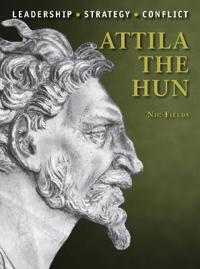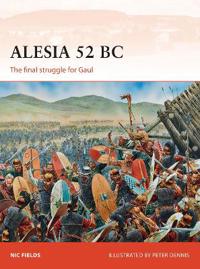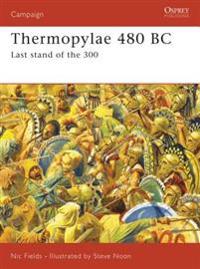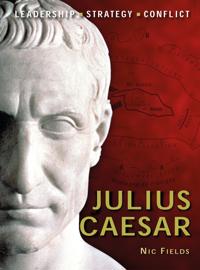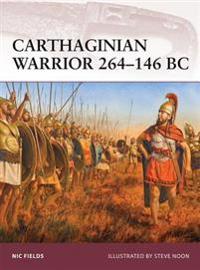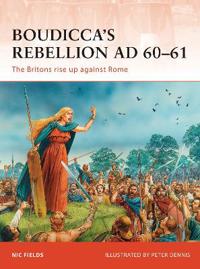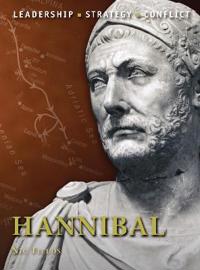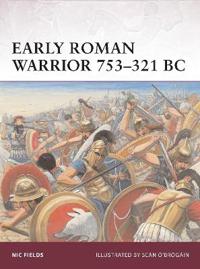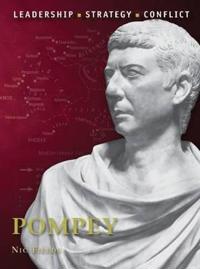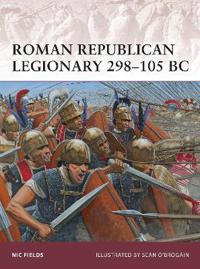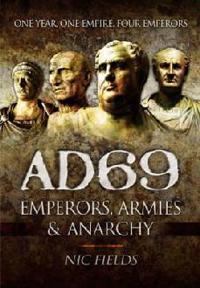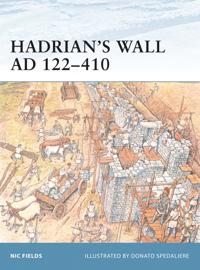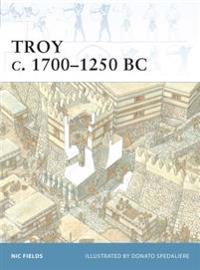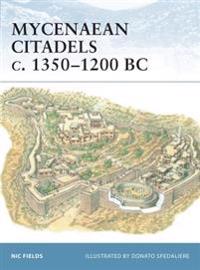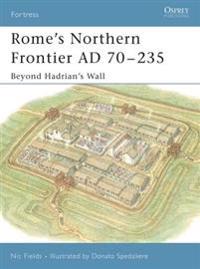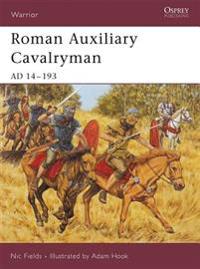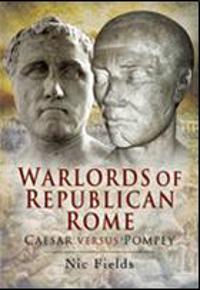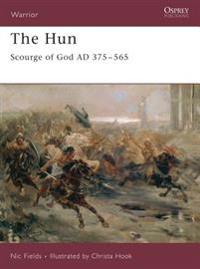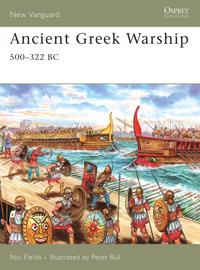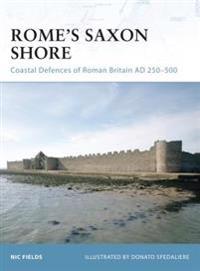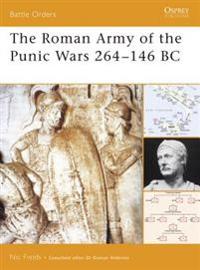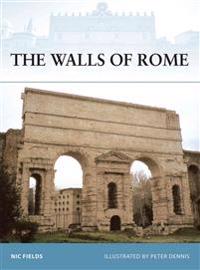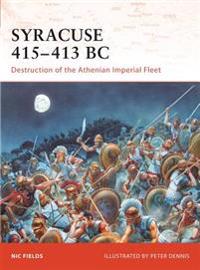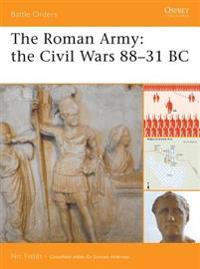Attila the Hun (Pocket)
avNic Fields, Steve (ILT) Noon, Nic Fields
ISBN: 9781472808875 - UTGIVEN: 2015-08Presents one of the most powerful men in late antiquity, Attila's peerless Hunnic empire stretched from the Ural mountains to the Rhine river. In a series of epic campaigns dating from the AD 430s until his death in AD 453, he ravaged first the Eastern and later the Western Roman Empire, invading It[...]
Alesia 52 BC (Pocket)
avNic Fields, Peter (ILT) Dennis, Nic Fields
ISBN: 9781782009221 - UTGIVEN: 2014-07In 52 BC Caesar's continued strategy of annihilation had engendered a spirit of desperation, which detonated into a revolt of Gallic tribes under the leadership of the charismatic young Arvernian noble Vercingetorix. Major engagements were fought at Noviodunum, Avaricum, and Gergovia, with the last [...]
Thermopylae 480 BC (Pocket)
avNic Fields, Steve Noon, Nic Fields
ISBN: 9781841761800 - UTGIVEN: 200711An authoritative re-telling of one of the greatest tales of heroism of all time and a decisive moment for the history of the world, Leonidas and the 300 Spartans' fight to the death against overwhelming Persian forces preserved the future of Greece and the golden age of classical civilization. Nic F[...]
Julius Caesar (Pocket)
avNic Fields, Peter Dennis, Nic Fields
ISBN: 9781846039287 - UTGIVEN: 201006One of the greatest military commanders in history, Julius Caesar's most famous victory - the conquest of Gaul - was to him little more than a stepping stone to power. An audacious and decisive general, his victories over the Gauls allowed him to challenge for the political leadership of Rome. Leadi[...]
Carthaginian Warrior 264-146 BC (Pocket)
avNic Fields, Steve Noon, Nic Fields
ISBN: 9781846039584 - UTGIVEN: 201009By the outbreak of the First Carthaginian War, Carthage controlled the whole coast of northern Africa. At first, the core of the Carthaginian armies was made up of armed citizens, backed by levies from tributary allies and foreign mercenaries. Later, the mercenaries would become the backbone of thes[...]
Boudicca's Rebellion AD 60-61 (Pocket)
avNic Fields, Peter Dennis, Nic Fields
ISBN: 9781849083133 - UTGIVEN: 201104When the Romans occupied the southern half of Britain in AD 43, the Iceni tribe quickly allied themselves with the invaders. Having paid tribute to Rome, they continued to be ruled by their own kings. But 17 years later when Prasutagus, the king of the Iceni, died the Romans decided to incorporate h[...]
Hannibal (Pocket)
avNic Fields, Peter Dennis, Nic Fields
ISBN: 9781849083492 - UTGIVEN: 201102By the end of the First Punic War, Carthage had been humiliatingly chased from the high seas, its once-powerful fleet reduced to a handful of triremes. But in 219 BC Hannibal, the eldest son of the charismatic general Hamilcar Barca, began the Second Punic War and was so successful that he threatene[...]
Early Roman Warrior 753-321 BC (Pocket)
avNic Fields, Sean O'brogain, Nic Fields
ISBN: 9781849084994 - UTGIVEN: 201107The prototypical 'Roman Legionnaire' often seen on television and in movies is actually the product of nearly a millennium of military development. Far back in the Bronze Age, before the city of Rome existed, a loose collection of independent hamlets eventually formed into a village. From this base,[...]
Pompey (Pocket)
avNic Fields, Peter Dennis, Nic Fields
ISBN: 9781849085724 - UTGIVEN: 201203Pompey, or Pompey the Great, was one of the best military leaders of the late Roman Republic. His campaigns against the Marians, his battles in Hispania and his defeat of the Mediterranean pirates launched him to political stardom where he became an ally of Julius Caesar and a member of the First Tr[...]
Roman Republican Legionary 298-105 BC (Pocket)
avNic Fields, Sean O Brogain, Nic Fields
ISBN: 9781849087810 - UTGIVEN: 201204Soon after the Caudine Forks fiasco, where Roman citizens had suffered the humiliation of being forced to pass under the yoke, an act symbolising their loss of warrior status, the tactical formation adopted by the Roman army underwent a radical change. Introduced as part of the Servian reforms, the [...]
Ad69 (Inbunden)
avNic Fields
ISBN: 9781781591888 - UTGIVEN: 2014-07With the death of Nero by his own shaky hand, the ill-sorted, ill-starred Iulio-Claudian dynasty came to an ignominious end, and Rome was up for the taking. This was 9 June, AD 68. The following year, commonly known as the 'Year of the Four Emperors', was probably one of Rome's worst. Nero's death t[...]
Hadrian's Wall AD 122-410 (Häftad)
avNic Fields
ISBN: 9781841764306 - UTGIVEN: 200302Hadrian's Wall is the most important monument built by the Romans in Britain. It is the best known frontier in the entire Roman Empire and stands as a reminder of past glories of one of the world's greatest civilizations. Its origins lie in a visit by the Emperor Hadrian to Britain in AD 122 when he[...]
Troy 1800-1250 BC (Häftad)
avNic Fields
ISBN: 9781841767031 - UTGIVEN: 200401In all the stories told by mankind and recorded through its history, the tale of the siege of Troy is perhaps the greatest secular story ever told. It has certainly captured the western imagination for some 3000 years. Archaeological work has revealed that the site around Hisarlik, where Troy is bel[...]
Mycenaean Citadels C. 1350-1200 BC (Häftad)
avNic Fields
ISBN: 9781841767628 - UTGIVEN: 200407From 1600 BC urban civilisation in Greece began to thrive and the power of a number of warlord states began to be felt around the Aegean. This period of Greek development and prosperity is called the Late Helladic or Mycenaean period, a time when Greek society was constantly geared for battle and in[...]
Rome's Northern Frontier AD, 70-235 (Häftad)
avNic Fields
ISBN: 9781841768328 - UTGIVEN: 200510The Roman excursions north of the Tyne-Solway line, the route of Hadrian's Wall, can be roughly divided into three main periods. Firstly, Agricola advanced against the Caledonii for six campaigning seasons culminating in the decisive battle of Mons Graupius in AD 83. Secondly, the Antonine Wall was [...]
Ancient Greek Fortifications 500-330 BC (Häftad)
avNic Fields
ISBN: 9781841768847 - UTGIVEN: 200601The development of the city-state in the Classical period of Greek history ensured a shift in the nature of fortifications in the region. No longer were fortresses designed to defend a ruler and his entourage, rather the whole of the citizen body had to be protected against any outside threats. The [...]
Roman Auxiliary Cavalryman (Häftad)
avNic Fields
ISBN: 9781841769738 - UTGIVEN: 200601Drawn from a wide range of warlike peoples throughout the provinces, especially on the fringes of the empire, auxiliaries wer generally not citizens of the Roman empire. The cavalry of the auxilia provided a powerful fighting arm; organised, disciplined and well trained, it was adept at performing b[...]
Warlords of Republican Rome (Inbunden)
avNic Fields
ISBN: 9781844158300 - UTGIVEN: 2008-10Caesar Versus Pompey.
Hun (Häftad)
avNic Fields
ISBN: 9781846030253 - UTGIVEN: 200611The Huns were the most feared barbarians of the Ancient world, known to their Roman enemies as the 'scourge of god'. Superb horsemen and excellent archers, they fought with a reflex composite-bow that could penetrate armour at 100 metres. In battle they would rush into the fray with surprising speed[...]
Ancient Greek Warship (Häftad)
avNic Fields
ISBN: 9781846030741 - UTGIVEN: 200703Formidable and sophisticated, triremes were the deadliest battleships of the ancient world and at the height of their success the Athenians were the dominant exponents of their devastating power. Primarily long ships designed to fight under oar power, their main weapon was a bronze-plated ram situat[...]
Rome's Saxon Shore (Häftad)
avNic Fields
ISBN: 9781846030949 - UTGIVEN: 200612The 'Saxon Shore' forts are among the most impressive surviving monuments of Roman Britain, although much about them remains a mystery. In an impressive outlay of money, manpower and materials the frontier system stretched across the Wash-Solent and included the heavy fortification of the major harb[...]
The Roman Army of the Punic Wars 264-146 BC (Pocket)
avNic Fields
ISBN: 9781846031458 - UTGIVEN: 2007-05As Rome's power and influence extended across the Mediterranean, she was destined for a collision with the Carthaginian Empire, a clash ultimately resulting in the decisive Second Punic War. At first the Roman Army was no match for the superior tactics and leadership of Hannibal and his troops. Howe[...]
The Walls of Rome (Häftad)
avNic Fields
ISBN: 9781846031984 - UTGIVEN: 200803Having defeated a Germanic invasion of northern Italy, the Emperor Aurelian surrounded Rome with a powerful circuit of walls. This great fortification is one of the best preserved of all city walls in the Roman Empire and remains a dramatic feature of Rome today, representing the most emblematic and[...]
Syracuse 415-13 BC (Häftad)
avNic Fields
ISBN: 9781846032585 - UTGIVEN: 200805Osprey's study of one of the most important battles of the Peloponnesian War (431 - 404 BC). In 415 BC Athens launched a large expeditionary force, its goal the rich, grain-producing island of Sicily. This was in response to a call for help in a minor war from an old ally but the true objectives wer[...]
The Roman Army (Häftad)
avNic Fields
ISBN: 9781846032622 - UTGIVEN: 200810The Roman Legions were the most highly organized troops of the ancient world, but the process of turning the Legions from what was essentially a part-time citizen militia into the professional force that first made Rome the dominant power in the Mediterranean and then built an empire that stretched [...]

